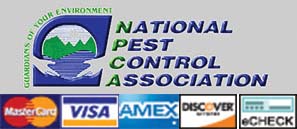Wasps and Hornets: Unwanted Guests in Your Baltimore Backyard
Summer in Baltimore is a beautiful time to enjoy the outdoors. Unfortunately, these warm months also bring an unwelcome presence: wasps and hornets. These buzzing insects can quickly turn a peaceful backyard into a stinging nightmare. Let’s dive into the world of these pesky creatures and explore why professional wasp and hornet nest removal is crucial for Baltimore residents.
Understanding Wasps and Hornets
While often grouped together, wasps and hornets are different. Wasps have slender bodies with smooth or hairless exoskeletons, while hornets are larger with more robust bodies and a distinctive head. Both build nests, which can be papery or enclosed, and are known for their aggressive behavior when threatened.
The Dangers of DIY Nest Removal
It might be tempting to tackle a wasp or hornet nest yourself, but it’s strongly discouraged. These insects are highly territorial and will defend their nest aggressively. Attempting to remove a nest can result in multiple painful stings, and in some cases, severe allergic reactions.
Professional Wasp and Hornet Nest Removal in Baltimore
To ensure your safety and the effective removal of the nest, it’s best to contact a professional pest control service. Experienced technicians have the necessary protective gear, knowledge, and tools to safely eliminate the problem.
Benefits of professional wasp and hornet nest removal:
- Safety: Professionals know how to handle these insects without putting themselves or you at risk.
- Efficiency: They have the expertise to quickly and effectively remove the nest.
- Prevention: Many pest control services offer preventative measures to keep these pests away.
Preventing Future Problems
Once the nest is removed, it’s important to take steps to prevent new ones from forming. Some tips include:
- Sealing cracks and crevices around your home.
- Removing potential food sources, such as uncovered garbage or sugary drinks.
- Keeping your property clean and free of clutter.
If you’re dealing with a wasp or hornet problem in Baltimore, don’t hesitate to call a professional pest control company. Your peace of mind and safety are worth it.
Bees, Wasps, and Hornets: A Baltimore Dilemma
The Importance of Professional Removal
While all three are flying insects capable of stinging, it’s crucial to understand the differences between bees, wasps, and hornets.
- Bees: Essential pollinators, bees are generally docile unless provoked. However, when they establish a hive in an unwanted location, removal becomes necessary.
- Wasps: Known for their aggressive behavior, wasps are a common pest in Baltimore. Their nests can be found in various places, from ground nests to those built on structures.
- Hornets: A type of wasp, hornets are larger and more aggressive. Their nests are typically papery and often found in high places.
Attempting to remove these insects yourself is risky. They can inflict painful stings, and in some cases, cause severe allergic reactions. It’s always best to call a professional pest control service.
Professional Bee Removal in Baltimore
Unlike wasps and hornets, many bee removal services prioritize relocation over extermination. This is due to the crucial role bees play in our ecosystem. Professional bee removal services will:
- Identify the bee species: Different bee species have different behaviors and removal methods.
- Assess the situation: Determining the hive’s size, location, and accessibility is crucial.
- Safe removal: Professionals use protective gear and techniques to safely remove the hive.
- Relocation: Many beekeepers are happy to adopt relocated hives.
Wasp and Hornet Removal in Baltimore
For wasps and hornets, the focus is on nest removal and prevention. Professionals will:
- Identify the species: This helps determine the best removal method.
- Inspect the nest: Assessing the nest’s location and size is crucial for safe removal.
- Safe removal: Using protective gear and specialized equipment, professionals will remove the nest.
- Preventative measures: Offering tips on how to prevent future infestations.
Choosing a Professional
When selecting a pest control service in Baltimore, consider the following:
- Experience: Look for companies with experience in bee, wasp, and hornet removal.
- Licensing and insurance: Ensure the company is licensed and insured.
- Humanity: If bee removal is necessary, choose a company that prioritizes relocation.
- Customer reviews: Read online reviews to get a sense of the company’s reputation.
By choosing a qualified professional, you can safely and effectively address your bee, wasp, or hornet problem while protecting yourself and the environment.
Wasps and Kids: A Potential Hazard
Yes, wasps outside your house can hurt your kids.
While wasps generally mind their own business, they become aggressive when they feel threatened, especially if their nest is disturbed. Children, being curious and often unaware of potential dangers, can accidentally provoke wasps. ww.usu.edu
Here are some potential risks:
- Painful stings: Wasp stings are quite painful and can cause swelling and discomfort.
- Allergic reactions: Some people, including children, are allergic to wasp venom. A sting can lead to a severe allergic reaction known as anaphylaxis, which is a medical emergency.
- Nest disturbance: Children playing near wasp nests can inadvertently agitate the wasps, leading to multiple stings.
To protect your kids:
- Teach them to avoid wasps and their nests.
- Keep food and drinks covered outdoors.
- Regularly check for wasp nests around your home
- If you find a wasp nest, contact a professional pest control service for removal.
By taking these precautions, you can significantly reduce the risk of your children being stung by wasps.
Preventing Wasp and Hornet Nests
Preventing wasp and hornet nests can save you from potential problems in the future. Here are some tips:
- Seal entry points: Inspect your home for cracks and crevices where wasps and hornets might enter. Seal these areas with caulk or silicone.
- Remove food sources: Keep food and drinks covered, especially outdoors. Clean up spills promptly.
- Trash management: Securely cover garbage cans and dispose of trash regularly.
- Regular inspections: Check your property for signs of nest building, such as chewed wood or papery materials.
- Professional prevention: Some pest control companies offer preventative treatments to deter wasps and hornets.
By following these steps, you can significantly reduce the chances of a wasp or hornet infestation on your property.
Common Wasps and Hornets in Baltimore
Baltimore is home to several types of wasps and hornets. Here are some common ones:
- Yellow Jackets: These are perhaps the most common and aggressive wasps. They build paper nests in sheltered locations like bushes, trees, or under eaves.
- Bald-faced hornets: These are large, black and white wasps that build exposed, football-shaped nests in trees or shrubs.
- Paper wasps: These wasps have long legs and build open, umbrella-shaped nests under eaves or overhangs.
Understanding the type of wasp or hornet you’re dealing with can help in identifying the best method of removal.
Behavior of Common Wasps and Hornets
Yellow Jackets
- Aggressive: Known for their aggressive nature, especially when defending their nest or food source.
- Scavengers: Often attracted to sugary substances and meat.
- Nest location: Typically build paper nests in sheltered locations like underground, in wall voids, or attics.
Bald-faced Hornets
- Aggressive: Highly territorial and will defend their nest vigorously.
- Diet: Primarily carnivorous, feeding on other insects.
- Nest location: Construct large, gray paper nests often exposed in trees or shrubs.
Paper Wasps
- Less aggressive: Generally more docile than yellow jackets and bald-faced hornets.
- Diet: Primarily carnivorous, feeding on other insects.
- Nest location: Build open, umbrella-shaped nests under eaves, porch ceilings, or other sheltered areas.
Understanding the behavior of these insects can help you avoid provoking them and take appropriate precautions.
Identifying Wasp and Hornet Nests
Being able to identify a wasp or hornet nest can help you determine the level of risk and the appropriate course of action.
Yellow Jacket Nests
- Location: Often found in sheltered areas like underground, in wall voids, or attics.
- Appearance: Papery, gray or brown, and can be quite large.
Bald-faced Hornet Nests
- Location: Typically exposed in trees or shrubs.
- Appearance: Large, gray, football-shaped nests.
Paper Wasp Nests
- Location: Usually found in sheltered areas like under eaves, porch ceilings, or on building walls.
- Appearance: Open, umbrella-shaped, with individual cells visible.
Important: If you’re unsure about the type of nest or feel uncomfortable dealing with it, contact a professional pest control service.
Fake Wasp Nests: Do They Work?
The short answer is: it’s unlikely.
While the idea of deterring wasps with fake nests seems logical, there’s limited evidence to support its effectiveness.
- Wasp behavior: Wasps are territorial, but they don’t necessarily avoid areas with existing nests.
- Individual variation: The effectiveness of these deterrents can vary greatly depending on the wasp species and local conditions.
While there’s no harm in trying a fake nest, it’s important to have realistic expectations. For optimal protection, combining it with other prevention methods is recommended.





